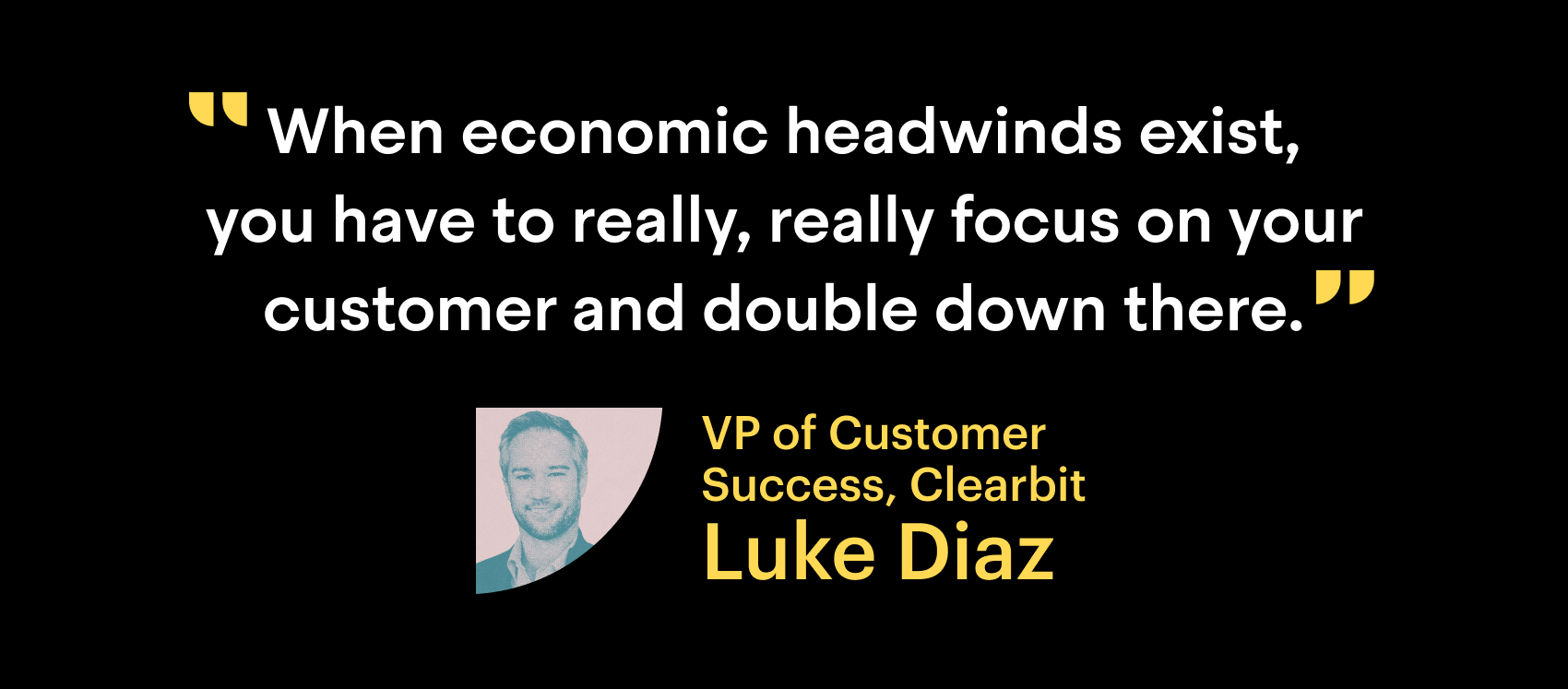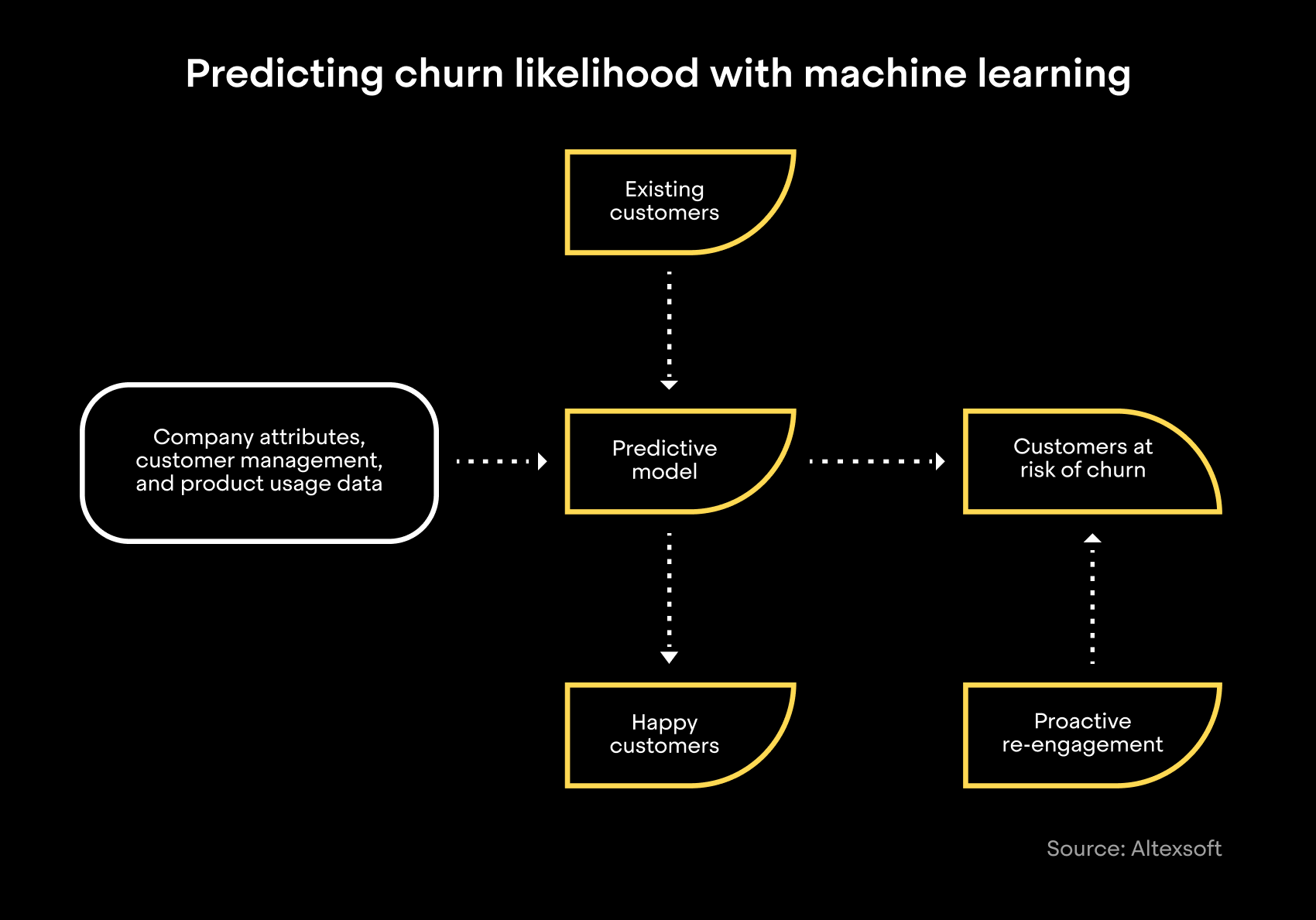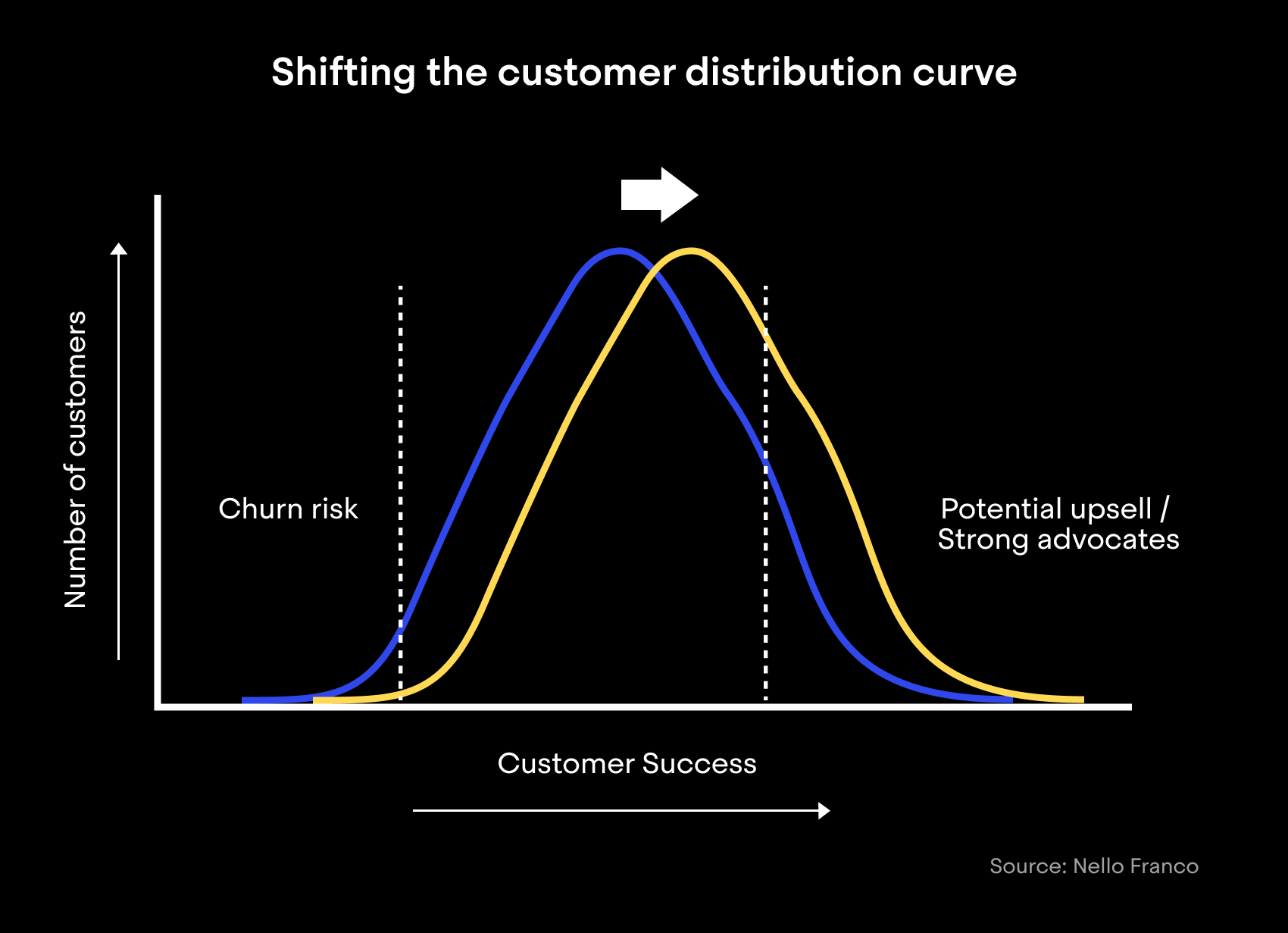First, as the economy is buffeted by turbulent seas, companies must batten down the hatches and devote their time and attention to their current customers. Then, because budgets and resources are undoubtedly restricted, they must learn how to do more – with less.
Automation has become a colossal aid for accomplishing both. Unlike previous financial downturns, businesses have more access than ever to technology that can put their data to work. Not only does this free up valuable time for companies to provide the human touch necessary to keep customers satisfied, it means that businesses actually have a decent shot at scaling their revenue instead of their costs.

Clearbit, the leading marketing data engine, has reaped the rewards of automation firsthand – leveraging it for everything from identifying churn risks to closing renewals, all without human involvement. These enormous efficiency gains have allowed the company to continue building on its six consecutive years of double-digit growth, even during these lean times.
Championing this approach is Luke Diaz, Clearbit’s VP of Customer Success. Since joining in February, Luke’s charge has been to protect the company’s revenue by deploying new, data-driven customer playbooks. Luke brings with him experience leading top customer success teams at Optimizely, AppsFlyer, and more and a successful first career running hedge funds.
In this episode of Scale, Luke lays out exactly how he’s guided Clearbit’s Customer Success team through the storm and how a resolute focus on reducing churn has paid dividends. Listen to the full episode above or get Luke’s key takeaways below.
This is Scale, Intercom’s podcast series on driving business growth through customer relationships. If you enjoy the conversation and don’t want to miss future episodes, just hit subscribe on iTunes, stream on Spotify, or grab the RSS feed in your player of choice.
Making automation personal – and meaningful
Personalization can be extremely difficult to get right when it comes to automation. When it fails, it fails spectacularly. Like when you open an email and see “Hi, First Name!” Or when you’re served ads for a product you’ve already purchased – or, worse, are thinking about canning.
There’s a high cost to these flubs. 54% of customers immediately opt out of communications from a company that misses the mark. But the inverse is also true. If you get it right – and meet your customers at precisely the right moment – 75% will take action after seeing a message that’s relevant to them.

For Luke, meaningful personalization comes down to delivering the right content to the right person at the right time. That’s exactly how Clearbit’s customer success team approaches delivering value with automation. Take the gap between onboarding and renewal, often a time when there’s a lull in the customer relationship. At Clearbit, they use the customer’s industry and product usage to continuously suggest new relevant use cases.
Where most companies struggle is with the quality of their data. Luke explains why making automation personal ultimately comes down to having the right data in hand:
“Showing the right thing to the right person at the right time is the Holy Grail of marketing and service. If you have lots of unstructured [information], it’s hard to get it in a position where it’s getting to the right person at the right time. You have to have the latent data attributes, the size of the company, the industry. Even the functional breakdown of your customer is very important because a head of marketing ops might not have the same interests as the head of sales.”
Combatting churn with machine learning
If serving relevant messages with perfect timing is the holy grail of marketing and service, then churn is the poison pill. According to Bain & Company, improving retention by just 5% can boost profits by as much as 95%. Catching unhappy consumers before they leave, however, is the tricky part. Too often, it’s only after they’re already halfway out the door that companies take note.
At Clearbit, Luke’s taken a different approach. Instead of piecing together why customers have left after the fact, Luke’s built a machine learning model to get ahead, months ahead, of potential churn. This model looks at company attributes, customer communications, and product usage – 400 variables in total – to predict who’s at risk. What’s more, it’s accurate 75% of the time.

This machine learning model doesn’t operate alone, though. It’s only effective when paired with qualitative insights from the customer success team. It’s their responsibility, after all, to take this quantitative safety net and use it to right the ship for these at-risk accounts. The result so far of this “one-two punch,” as Luke describes it: hundreds of thousands of dollars saved.

Here’s Luke on how he and his team make use of the machine learning model:
“The output of [our machine learning model] is we have a likelihood to churn prediction score in Salesforce. I simply run the Python notebook and upload the data to Salesforce on a tactical level, and then that helps the CSMs prioritize. It also creates a fun dynamic where you have a quantitative yin to the qualitative yang, such that if the churn prediction score is above 35%, the CSM has to convince the whole team that this account is not at-risk if they haven’t previously flagged it. It’s a nice one-two punch between CSM insights and machine learning.”
Tapping the hive mind in customer success
Although automation is often touted as a silver bullet for modern businesses, a personal touch is still crucial. Only by combining the best of automation and human action can you effectively achieve what Nello Franco, former SVP of Customer Success at Talend, calls shifting the customer distribution curve – that is, minimizing at-risk customers and maximizing satisfied ones.

When it comes to churn risk, in particular, automation can provide great value in sounding the alarm as is the case with Clearbit’s machine learning model. But, ultimately, it’s customer success managers who will proactively tackle the complex customer problems at its root.
To solve these sorts of stickier problems that may spell the end of the customer relationship if they’re not addressed, Clearbit’s customer success team holds a weekly “red accounts” meeting where they collectively brainstorm ways to secure their at-risk customers. Last quarter alone, this approach helped reduce churn by upwards of 15%. Luke describes the meeting like this:
“They bring their biggest churn challenges to this meeting. And it’s not to blame [anyone] or point fingers. It doesn’t feel like a pipeline review. It feels like crowdsourced problem-solving. To make it fun, we have a theme, and we change our virtual backgrounds on Zoom. It feels much less acerbic than the name implies. And you pose your challenge. You’re like, ‘I’m really blocked here. I haven’t heard from this customer in four email outreaches. What should I do?’ And then the team chimes in and says, ‘Hey, have you thought about this? Have you thought about that? Have you leveraged LinkedIn Sales Navigator? Have you filed a support ticket? Maybe there’s a back door you could [use to] get this person’s attention.’ And it becomes about creative problem solving.”
You can also read a full transcript of the interview which has been lightly edited for clarity.
